One of the biggest questions we get in the fall is what kind of fly to cast in the Smokies. Many anglers have misconceptions about the best flies to use in the autumn. There are a number of things going on in the fall and that gets anglers thinking about their fly selections. The weather and water temperatures have certainly cooled down and many anglers are often thinking about large brown trout. While these are all valid considerations, the truth of the matter is that many fly fishers outsmart themselves with their fly selection.
One of the biggest misconceptions we see in the fall is that dry fly fishing is a waste of time because the water is cold. Nothing could be further from the truth, and many years we consider the dry fly fishing in October and November to as good or better than what we see in April. There are actually quite a number of insects hatching in the Smokies including Blue Wing Olives, midges, and several types of caddis.
This means that a variety of dry fly patterns will work, and not surprisingly the selection is pretty darn close to what you might fish at other times of year. An Orange Stimulator in #16 is an excellent pattern that imitates large October Caddis and is easy to see on the water. Even better it’s a great fly to use with a small nymph dropper.
A Parachute Adams in #16 is another staple for fall fishing. Even though it’s clearly larger than the Baetis mayflies that are emerging this time of year the fish don’t seem to mind. In fact, the water is pretty high this fall compared to most years and we’ve done pretty well with a #14 Parachute Adams.
The important thing to remember when fishing dry flies in cool weather is to focus your efforts on relatively shallow water. This doesn’t mean riffles that won’t cover your boots, but avoid spending much time on water that’s deeper than your thighs. This is plenty deep to hold fish, but still shallow enough for them to pay attention to surface for feeding opportunities.
Those anglers hoping to connect with a large brown trout will often favor large nymphs or streamers come autumn, but we’d often recommend something a little different if not run of the mill. Stonefly nymphs can be a pretty good choice, but an angler has to consider that large brown trout in the Smokies are among the most skittish fish you’ll ever find. A #16 beadhead nymph is very effective and isn’t very imposing when it comes to cautious fish. We used to tie on #6-10 nymph patterns in the fall but have stepped down to #12 at the largest and depend on #16 for most. In years when the water is low we downsize to a #18.
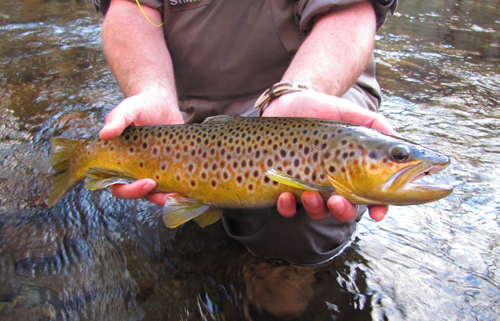
Eric Wetherington caught this beautiful wild brown trout on a #16 beadhead after he missed a larger fish with a similar pattern. You can make out the fly in its upper lip.
Streamers can work, but again, don’t go too big. Autumn flows are often relatively low so casting large streamers in low, clear water can be like throwing rocks at the fish. Another problem is that streamers tend to snag up on leaves if there are very many drifting in the current. Our favorite method for fishing streamers in the fall or early winter is to dead drift them almost like big nymphs in deep slots or plunges but giving them an occasional twitch. This gives them the appearance of an injured or stunned fish and will trigger a predatory response from large fish. Small Clouser Minnow are great for this as well as old school Woolly Buggers. I’ve always had a soft spot for Muddler Minnows after catching my first really large trout on one in the mid 1990’s.
No matter what you choose to fish, just keep getting out on the water and enjoy your time on the stream!
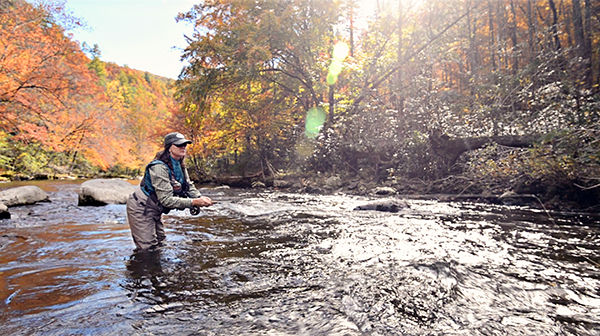
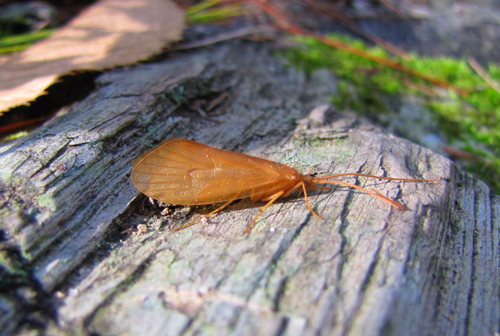
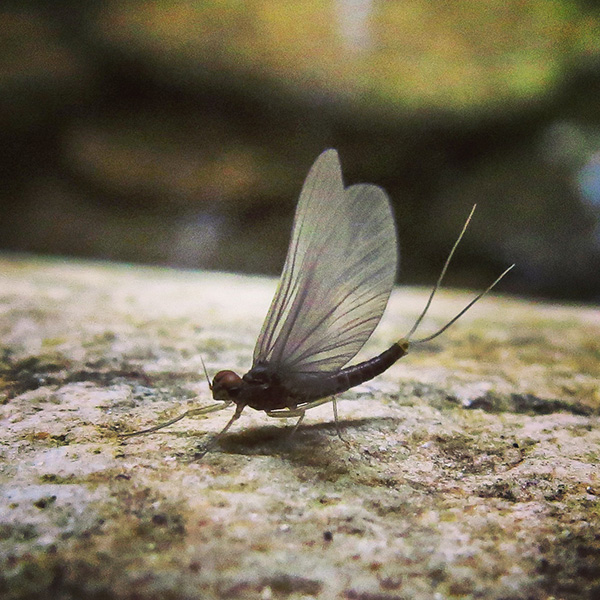
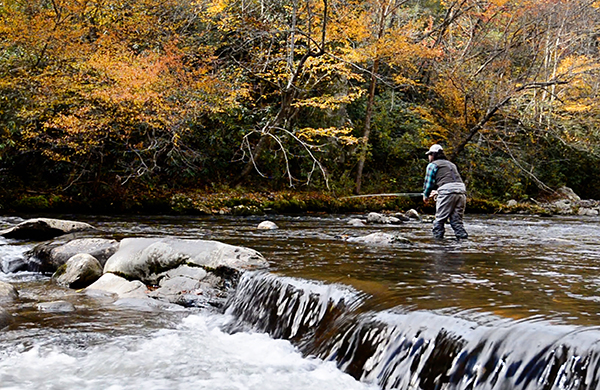
Darrell Kunitomi says
From California — this is a great posting, makes me want to head your way more than ever. Love fall fishing, when streams empty and water is low and slow.
thanks,
Darrell